The Environmental Impact of Non-Toxic Beauty Products
flareAI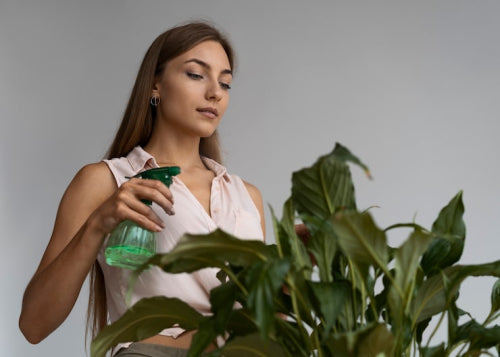
Quick Listen:
Every morning, millions of women and a growing number of men peer into the mirror, applying lipstick with a flourish, blending foundation for that flawless base, and sweeping blush to mimic a sun-kissed glow. This daily rite of passage has endured for generations, a personal symphony of enhancement and expression. Yet beneath the allure lies a darker undercurrent: each application potentially unleashes microplastics into waterways, endocrine-disrupting chemicals into ecosystems, and non-biodegradable packaging into overflowing landfills. The beauty industry, a behemoth promising perfection, has quietly exacted a toll on the planet through petroleum-derived formulas, unsustainably sourced palm oil, and excessive waste. But a transformative wave is rising one that reimagines cosmetics not as environmental adversaries, but as allies. At its forefront stands non-toxic beauty, exemplified by innovators like Liht Organics, whose formulations exceed 80% clean, organic ingredients, rendering them not just effective, but safe enough to ingest without a second thought.
Many women feel trapped by makeup that hides flaws but risks irritation and hidden toxins. This daily choice weighs heavily, dimming confidence over time. Liht Organics invites you to embrace beauty differently. With up to 90% USDA-certified organic ingredients, our vegan, cruelty-free products deliver vibrant color and gentle care, letting you glow with confidence, knowing your skin is nurtured, not compromised. Shop Now!
Reducing Beauty's Footprint: The Environmental Impact of Non-Toxic Beauty Products
The global beauty market, a colossus worth tens of billions, is undergoing a profound shift toward non-toxic formulations a movement rooted in necessity rather than novelty. Conventional cosmetics, brimming with synthetic preservatives, artificial fragrances, and stabilizers, bear responsibility for a cascade of ecological harms: from plastic particulates choking marine life to persistent pollutants infiltrating soil and food chains. Take parabens and phthalates, infamous for their longevity in the environment; these compounds resist breakdown, bioaccumulating in aquatic species and, through the food web, back to human consumers. Non-toxic counterparts disrupt this cycle decisively. By favoring botanical extracts jojoba oil in lieu of petroleum derivatives, beetroot pigments over coal-tar dyes these products minimize habitat disruption, streamline toxin-free supply chains, and amplify regenerative agriculture practices that restore rather than ravage the earth.
Liht Organics exemplifies this paradigm with its arsenal of high-performance makeup, each piece formulated with over 80% organic components for unparalleled skin compatibility. Produced in the USA and Singapore, these offerings transcend mere aesthetics, embedding dermatological benefits like deep hydration and barrier reinforcement while eschewing common irritants. The result is professional-grade longevity that doubles as a gentle skincare ritual proving that efficacy need not compromise conscience. In regions like the United Arab Emirates, Singapore, and Australia, where discerning consumers increasingly scrutinize their routines, Liht Organics illuminates a path to beauty that harmonizes personal radiance with planetary health.
The Surge of Clean Beauty: What's Driving the Change?
Step into a flagship Sephora or navigate the lifestyle aisles on Namshi in the UAE, and the evidence is inescapable: "clean beauty" badges proliferate, evolving from esoteric jargon to strategic imperative. This ascent is quantifiable and compelling. The global natural cosmetics market reached USD 31.84 billion in 2023, on track to expand to USD 45.60 billion by 2030 at a compound annual growth rate of 5.3%. What propels this trajectory? Escalating expenditures on wellness-oriented cosmetics, coupled with heightened consumer vigilance over chemical compositions and their dermal repercussions issues like allergies, acne, and rashes triggered by synthetics such as methylparaben and propylparaben. North America captured 27.0% of the global share in 2023, with the U.S. spearheading the charge, buoyed by Gen-Z's fervor and the burgeoning LGBTQ+ demographic's embrace of inclusive, value-aligned products. Notably, color cosmetics commanded 30.1% market dominance that year, affirming that vibrant, enduring pigmentation can coexist with conscientious formulation.
Beyond ingredient swaps, the revolution encompasses holistic lifecycle stewardship. Packaging, long a silent saboteur, now undergoes rigorous eco-redesigns: think amber glass vials supplanting single-use plastics, or post-consumer recycled cartons. Liht Organics champions restraint, opting for compact, fully recyclable vessels that reduce material throughput and visual clutter. Sourcing and production further amplify impact; dual manufacturing in the USA and Singapore curtails transoceanic shipping emissions, obviating the need for fuel-intensive freighters to ferry compact palettes across hemispheres. Singapore, a vanguard of urban sustainability, amplifies this resonance its compact populace, squeezed between skyscrapers and sea, prizes brands that mirror national edicts on resource efficiency and green innovation.
This momentum permeates broader landscapes, from Malaysia's bustling bazaars to India's teeming metropolises. Supermarkets and hypermarkets, exemplified by UAE's Faces outlets, steered 38.1% of global natural cosmetics distribution in 2023, democratizing access to these enlightened choices. Patrons in these corridors aren't merely procuring pigments; they're endorsing a ethos of stewardship safeguarding Dubai's fringing reefs from runoff toxins or preserving the Gange's sanctity against industrial effluents. The clean beauty surge defies happenstance; it's a calibrated rebuttal to an era deeming "natural" not indulgence, but imperative.
From Lipstick to Landfills: Liht Organics in Action
Envision a Dubai tastemaker, capturing a TikTok reel under relentless sun, buffing Liht Organics blush to a seamless, sweat-proof sheen devoid of any synthetic residue to mar the moment or the marina below. Or consider a Sydney beachgoer, post-surf, dabbing their tinted serum, assured it's barrier-friendly to corals and impervious to saline rinses that might otherwise imperil the Barrier Reef. These vignettes aren't fabrications; they encapsulate Liht Organic's tangible triumphs, a brand mastering the alchemy of potency and purity.
What sets Liht Organics apart is its fusion of cosmetics and cosmeceuticals makeup that multitasks as therapeutic topicals. With exceeding 80% organic actives, their spectrum yields opaque yet breathable coverage, laced with free-radical scavengers and moisture magnets that fortify and fortify the complexion. In the U.S., where the clean beauty market seized 35.08% of worldwide revenue in 2023, skincare surged ahead at 41.70% a niche Liht commandeers by transmuting foundations into fortifiers and stains into soothers. Worldwide, women propelled 83.63% of this demand, converging on specialty emporia like UAE's Gold Apple for these paradigm-shifting staples.
India's organic personal care arena, galloping at a 10.1% CAGR, finds perfect synergy with Liht's philosophy a tapestry weaving Vedic herbal legacies into contemporary contouring. Via conduits like Namshi, Liht's wares pierce the pandemonium, validating that "organic" equates to robust resilience, not diluted delivery or dreary durability. Saudi Arabia, in its sociocultural efflorescence, witnesses analogous adoption: shoppers seek sanctuaries that venerate vessel and verdure alike. Liht's narrative unfolds as subtle subversion, demonstrating that facial finery can elevate earthly equilibrium.
Extending this praxis, Liht Organics addresses perennial pain points like product opacity and endurance, hallmarks of legacy lines. Their eyeliners withstand humidity spikes in Kuala Lumpur monsoons, while balms hydrate through arid Abu Dhabi afternoons all sans the silicones that smother pores or sulfates that strip vitality. This isn't ancillary; it's core to their mandate, ensuring that non-toxic doesn't translate to non-performant. In Australia, where sun-scorched skins demand dual defense, Liht's SPF-infused tints emerge as saviors, blending broad-spectrum shelter with sheer sophistication. Such integrations underscore a broader verity: sustainable beauty amplifies, rather than attenuates, user experience.
Navigating the Bumps: Trust, Cost, and the Roadblocks Ahead
Despite its ascendance, clean beauty confronts formidable fissures. Foremost: incredulity. Shoppers confront "80% organic" declarations with furrowed brows what lurks in the residual fraction? Does "clean" signify substantive safeguard for epidermis and environs, or mere semantic sleight? Liht Organics confronts this forthrightly, demystifying via meticulous ingredient dossiers across digital touchpoints no arcane argot, merely elucidation: how arnica assuages swelling sans sensitizers, or chamomile calms without corrosives. This transparency transmutes trepidation into tenacity.
Economics exact another levy. Premium botanicals ethically harvested argan or wildcrafted rosehip command costs that eclipse conventional counterparts, potentially alienating aspirants in cost-sensitive spheres like Malaysia or India. Yet audit the aggregate: diminished dermatological distress curtails ancillary outlays on amelioratives, while enduring efficacy elongates product lifespans. Regulatory mazes compound complexity; the EU's stringent strictures on suspect substances eclipse laxer U.S. or UAE frameworks, encumbering R&D and inflating adherence expenditures. Liht circumvents via adherence to supranational benchmarks, forging fidelity formula by formula.
These impediments illuminate imperatives: elucidation as conduit from cynicism to conviction. A Singaporean beauty savant, sipping kopi over discourse, encapsulated it: "Perfection eludes; progression prevails." Liht internalizes this, alchemizing apprehensions be it ingredient ignorance or efficacy qualms into conversational catalysts. By amplifying advocacy on Instagram reels and TikTok threads, they dismantle barriers, nurturing a cadre conversant in clean's credentials.
Green Gains: How Non-Toxic Beauty Pays Off
Inverting obstacles yields orchards of opportunity. Sustainability morphs from sidebar to lodestar, magnetizing allegiance in a marketplace forecasted to burgeon to USD 21.29 billion by 2030 for clean beauty, ascending at 14.8% per annum. Liht's hallmark palatably pristine purity conjoined with virtuoso vitality distinguishes amid Instagram's inundation and TikTok's torrent, where ephemera favors earnestness.
Envision alliances: Liht partnering with Singapore's The Green Collective for bundled palettes and reusable totes at verdant vignettes. Or India-centric TikTok troves, influencers illustrating "litterless luminosity" regimens. These transcend ephemera; they engender ecosystems, metamorphosing transients into torchbearers. In Australia and the U.S., where hypermarkets/supermarkets corral over 43.5% of organic disbursements, Liht's acumen gleams supreme execution at equitable exchange, honoring thrift over extravagance.
The remuneration? Augmented affluence and ardent adherents. As the organic personal care sector aspires to USD 44.77 billion by 2030, inflating 9.4% annually, Liht's archetype localized, nurturing, perdurable emerges as the astute stake in verdant vogue. This isn't speculative; it's substantiated by surging sales in specialty niches and social amplification, where user-generated odes outpace paid promotions.
A Greener Glow: The Horizon Ahead
Gazing toward 2030 and beyond, non-toxic beauty eclipses marginalia to author the industry's next chapter. Skincare's 50.2% hegemony in organics, alongside global recoil from desiccating synthetics, imparts inexorable impetus propelled by apprehensions over irritation, aridness, and lethargy. Liht Organics, anchored in ingenuity yet attuned to universal uplift, helms this flotilla sculpting cosmetics that exalt visage while esteeming vista.
From Riyadh's revitalized realms to Mumbai's multifaceted mosaics, the summons swells: aesthetics with accountability. This crusade, where each extrusion or stroke erodes entrenched excess, beckons participation not spectatorship, but stewardship. Liht beckons: immerse in their oeuvre via Gold Apple UAE or The Green Collective Singapore, inaugurating regimens that emanate intrinsically. Your dermis, your domain they'll reciprocate profoundly.
Frequently Asked Questions
What makes non-toxic beauty products better for the environment than conventional cosmetics?
Non-toxic beauty products use botanical extracts like jojoba oil and beetroot pigments instead of petroleum derivatives and coal-tar dyes, which significantly reduces habitat disruption and eliminates persistent pollutants. Unlike conventional cosmetics containing parabens and phthalates that bioaccumulate in marine life and resist environmental breakdown, clean beauty formulations break down naturally without harming aquatic ecosystems. Additionally, many non-toxic brands use sustainable packaging like recyclable glass containers and implement eco-friendly manufacturing practices to minimize their carbon footprint.
How big is the clean beauty market and why is it growing so rapidly?
The global natural cosmetics market reached $31.84 billion in 2023 and is projected to grow to $45.60 billion by 2030 at a 5.3% annual growth rate. The clean beauty segment specifically is expanding even faster at 14.8% annually, expected to reach $21.29 billion by 2030. This rapid growth is driven by increasing consumer awareness of chemical-related skin issues like allergies and acne, Gen-Z's preference for sustainable products, and growing demand for wellness-oriented cosmetics that don't compromise personal health or environmental safety.
Are non-toxic beauty products as effective as traditional makeup and skincare?
Yes, modern non-toxic beauty products like those from brands such as Liht Organics deliver professional-grade performance while offering additional skincare benefits. These products, formulated with over 80% organic ingredients, provide long-lasting coverage and color payoff while doubling as therapeutic treatments with hydrating and barrier-strengthening properties. Many clean beauty formulations are designed to withstand extreme conditions from humidity in tropical climates to sun exposure in desert regions proving that sustainable ingredients don't compromise on durability or effectiveness.
Disclaimer: The above helpful resources content contains personal opinions and experiences. The information provided is for general knowledge and does not constitute professional advice.
You may also be interested in: FAQ's – Liht Organics
Many women feel trapped by makeup that hides flaws but risks irritation and hidden toxins. This daily choice weighs heavily, dimming confidence over time. Liht Organics invites you to embrace beauty differently. With up to 90% USDA-certified organic ingredients, our vegan, cruelty-free products deliver vibrant color and gentle care, letting you glow with confidence, knowing your skin is nurtured, not compromised. Shop Now!
Powered by flareAI.co
Share
You May Also Like
-

Discovering Self-Love Through Clean Beauty: A Guide to Nurturing Your Inner and Outer Self
In the journey of self-love, every action, thought, and choice we make towards ourselves can be a powerful affirmatio...
-

The Science Behind Organic Makeup and Pregnancy: A Gentle Choice for Moms-to-Be
wp:paragraph Pregnancy is a wonderful and exciting journey that comes with added responsibilities of ensuring the ...
-
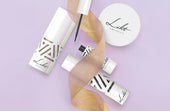
Liht Organics Black Friday: Enhance Your Beauty Routine with Vegan, Organic, and Natural Essentials!
As the holiday season approaches, there’s a sparkle in the air, and we at Liht Organics are thrilled to add a touch o...
-

Organic Makeup That Heals As It Conceals
Liht Organics Empowers Women With Only The Best For Their Beauty NeedsLiht Organics combines the best of both worlds:...
-
![[FEATURE] Liht Organics to debut at TFWA Asia Pacific show](//lihtorganics.com/cdn/shop/articles/1_1.png?v=1759328400&width=170)
[FEATURE] Liht Organics to debut at TFWA Asia Pacific show
‘Organic makeup that’s safe enough to eat’ — Liht Organics to debut at TFWA Asia Pacific show by Hannah Tan | 24 Apri...
-
![[FEATURE] The Singapore-based organic makeup brand is a first-time exhibitor at this year’s TFWA Asia Pacific Exhibition in Singapore in May 2025](//lihtorganics.com/cdn/shop/articles/2_1.png?v=1759328386&width=170)
[FEATURE] The Singapore-based organic makeup brand is a first-time exhibitor at this year’s TFWA Asia Pacific Exhibition in Singapore in May 2025
TFWA Asia Pacific preview: Liht Organics targets expansion in travel retail By DFNI Staff Writer The Singapore-bas...
-
![[FEATURE] Travel Retail Awards 2025 finalists - Best Make-up Product Color-Intense Liquid Lipstick – Liht Organics](//lihtorganics.com/cdn/shop/articles/4_e2f54f0f-fcd1-46e7-9990-fc9d29e35131.png?v=1759328382&width=170)
[FEATURE] Travel Retail Awards 2025 finalists - Best Make-up Product Color-Intense Liquid Lipstick – Liht Organics
Revealed: Travel Retail Awards 2025 finalists By Trbusiness Editor | Wednesday, 23 July 2025 15:21 TRBusiness is th...
-
![[FEATURE] Liht Organics targets expansion in travel retail](//lihtorganics.com/cdn/shop/articles/3_1.png?v=1759328346&width=170)
[FEATURE] Liht Organics targets expansion in travel retail
Organic makeup that’s safe enough to eat: Liht Organics targets expansion in travel retail By Laura Shirk Liht Organ...
-

[FEATURE] Gulf News: TikTok’s strawberry girl makeup trend: How to achieve that rosy glow inspired by Hailey Bieber
Berry, berry, strawberry, love strawberry, like BTS’s J-Hope, the band’s strawberry enthusiast once said. If only we ...
-

[FEATURE] Gulf Business Magazine : Liht-ing it up
Our founder, Nerissa Low was interviewed by Gulf Business, where she discussed her experience launching Liht, an orga...
-

[FEATURE] Daily Vanity: 11 local beauty brands owned by women – you’d be surprised how many of them started in their kitchens!
When we give a shout-out to homegrown beauty businesses, we aren’t just doing it for the sake of supporting local. Th...
-

[FEATURE] Entrepreneur ME : UAE-Based Liht Organics' Nerissa Low On Crafting An Organic Makeup Brand For The Skin-Conscious Consumer
As is the case with the origin stories of so many startups out there, Liht Organics came into being after its founder...
-
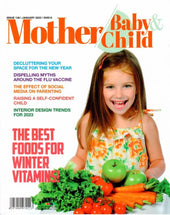
Mother, Baby & Child Editor’s Pick: Liht Organics Lights the Way
Excited to be the Mother, Baby & Child’s ‘Editors pick’ for their choice of Beauty brand.The article outlined the...
-
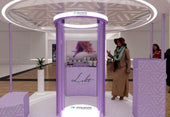
[FEATURE] EmiratesWoman - 8 Fabulous things to do in Dubai this weekend
by SARAH JOSEPHJANUARY 20, 2023Try the UAE’s first virtual reality makeup podium The popular VR-backed makeup exper...
-

Nerissa Low of Liht Organics On The Self-Care Routines & Practices Of Busy Entrepreneurs and Business Leaders
By Maria Angelova, CEO of Rebellious Intl.Date: 4 January, 2023Nerissa Low of Liht Organics On The Self-Care Routines...
-

Liht Organics: Meet the beauty brand that has caught the eye of the Royal Family of Bahrain
By Crystal Lee Digital Editor28 May 2021The world of clean beauty is, ironically, rather murky.That’s because the ter...
-

The latest luxury makeup and skincare drops, including serums, concealers, moisturisers and more
Allisa Noraini21 May, 2021It’s fine to splurge in the name of beauty. This new range of makeup and skincare drops are...
-

These SG Beauty Bosses Are Conquering The World Despite The Pandemic
First Singapore, then the US, China, Germany, Dubai, UK, South Korea, Malaysia, Hong Kong, Thailand, Australia… By...
-

Nerissa Low, Founder at Liht Organics
Written by Callum LaingPosted on December 26, 2020 10 min readNerissa Created Organic Makeup That Actually Improve...
-

Liht Organics – Makeup That Makes You
At Liht Organics, our mission is simple – to provide women (and men) with a safe experience when it comes to beauty s...
-

Why Should We Use Organic Makeup?
We cannot deny that cosmetics is one of our beauty essential item – it enhances our looks and conceals our flaws. Man...
-

Organic makeup and why your skin will love it: Liht Organics founder
By Jolene,July 27, 2020 |7 mins readOrganic make up in Singapore is a trend that is fast-catching on here as we becom...
-

[FEATURE] DC EDIT – Makeup & Confidence: Talking Self-love With Liht Organics’ Founder Nerissa Low
Makeup and confidence — the long, drawn-out fight that many of us have grappled with personally. I’m sure I’m not the...
-

[FEATURE] THE FEMALE CULTURE – I TRIED LIHT ORGANICS AND THIS IS HOW IT WENT
I’m a huge fan of makeup and I love testing out new products so I was pretty excited to get my hands on Liht Organics...
-

[FEATURE] SINGAPORE MOTHERHOOD – The Best Organic and Natural Skincare and Makeup for Pregnant and Breastfeeding Mums in Singapore
Pregnancy is a hormone-volatile period for women. One place where this makes itself seen and felt is on the skin. Som...
-

[FEATURE] AFTER CLINIC HOURS – 21 Back to Beauty Deals in Singapore (2020)
With spas and salons shuttered island wide for two months, I never thought I’d be this desperate for a good old’ Swed...
-

[FEATURE] KUL AL USRA MAGAZINE JUNE 2020
Choosing Pinks & Oranges this summer!Featured: Moisture Burst Lip Glaze in Pink Cupcake.
-
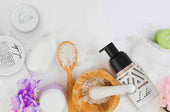
[FEATURE] Award-winning Organic Makeup Brand Liht Organics Gives Back to the Community & Environment During COVID-19
Singapore’s First Organic Makeup Brand with 100% Natural Makeup That Is Safe Enough to Eat Liht Organics promises org...
-

[FEATURE] COSMETICS DESIGN ASIA – COVID-19 ‘WAKE-UP CALL’: SINGAPORE’S LIHT ORGANICS SEES GLOBAL POTENTIAL AMID CLEAN BEAUTY CLAMOUR
Original article at: https://www.cosmeticsdesign-asia.com/Article/2020/06/26/Singapore-s-Liht-Organics-sees-globa...
-

[FEATURE] THE LIFESTYLE COLLECTIVE – BEAUTY SHOULD NEVER BE CRUEL
Date: June 24, 2020Author: Kristen Chen Liht (pronounced as light) Organics is a Singaporean organic makeup brand t...
-

[FEATURE] NÜYOU – 7 ONLINE PLATFORMS TO SHOP FOR CLEAN BEAUTY PRODUCTS
纯净美容(Clean Beauty)的美肤概念,再近几年来越来越受欢迎。随着消费者“爱自己”的美容意识逐步提升,对于用在脸上的所有物品、成分更为关注和讲究。以广义来讲,纯净美容主张使用“干净”成分和无毒配方,让肌肤的可能性损伤减到最小...
-

[FEATURE] COSMOPOLITAN MIDDLE EAST – 3 BENEFITS OF SWITCHING TO ORGANIC BEAUTY PRODUCTS THIS RAMADAN
By Cosmo – May 08, 2020Nerissa Low, founder of Liht Organics, shares the ultimate benefits of going organic this mont...
-

Nerissa Low of Liht Organics: “Seeing Light at the End of the Tunnel; 5 Reasons To Be Hopeful During this Corona Crisis”
Ely Weinschneider, Psy.D.May 8 · 9 min read …It shows us that everyone- whether we are rich or poor, regardless...
-

[FEATURE] AL MARA MAGAZINE APRIL 2020
-

[FEATURE] RetailME April 2020 – Liht Organics Stays Firm On Strengthening GCC Presence
-

[FEATURE] EMARAT AL YOUM NEWSPAPER – 27 MARCH 2020
English Translation:In spring and summer days, women love to have very light makeup in terms of color and texture, ...
-

[ARTICLE] WKND Magazine March 2020 – Know Your Organic Makeup
-

[FEATURE] AVIAMOST DUBAI – March/April 2020
English Translation:Lipstick with organic flowers. Thanks to the rich complex of natural ingredients, the lipstick...
-

[FEATURE] RUSSIAN EMIRATES (MAR/APR ISSUE)
Russian Emirates is a luxury lifestyle and fashion magazine covering information about the UAE, fashion, beauty, j...
-

[FEATURE] – KUL AL USRA MAGAZINE MARCH 2020
GET THE LOOK!
-

[FEATURE] IMAGES Retail ME – Liht Organics Announces GCC-Wide Expansion
Rupkatha Bhowmick Mar 10, 2020 The plan is to reach 75 Liht Organics retail touchpoints by June-July 2020 and touch...
-

[FEATURE] BABY & CHILD SPRING 2020 – NATURAL BEAUTIES
-

[FEATURE] AWQAT DUBAI – Liht Organics: The First Premium Organic Makeup Brand
ENGLISH TRANSLATION:Liht Organics – The First Premium Organic Makeup Brand Liht Organics, a premium organic beauty ...
-

[FEATURE] FRIDAY MAGAZINE – THE RETRO EYELINER LOOK
-

[FEATURE] MOTHER BABY & CHILD – VANITY ESSENTIALS – THE BEAUTY EDIT
-

[FEATURE] Masala! Magazine February/March 2020 Issue – Beauty Debut: Liht Organics
-

[Feature] – TimeOut Singapore – The Best Local Beauty and Skincare Brands In Singapore
For full article, click here.
-

[FEATURE] KUL AL USRA MAGAZINE – LIHT UP YOUR WORLD WITH LIHT ORGANICS
[ENGLISH TRANSLATION]Liht Up Your World With Liht OrganicsThe First Premium Organic Makeup Brand To Debut In The Mi...
-

[FEATURE] SINGAPORE TATLER – 9 Local Beauty Brands You Should Know Of
-

[FEATURE] nüyou August 2019 Issue – 15 Faces To Watch
-

[FEATURE] HONEYCOMBERS – Local Beauty Gurus: Singapore Beauty Brands You Need To Know About
-

[FEATURE] The Wellness Insider – Seeing The Liht With Founder Nerissa Low
-

[FEATURE] 联合早报 (LianHeZaoBao) – Women Entrepreneur Awards 2019 Coverage
-

[FEATURE] THE STRAITS TIMES Life – Clean beauty with a Singapore heart
-

Romantic Organic Makeup Looks for Valentine's Day: Tips, Tricks, and Product Picks
Valentine's Day is the perfect occasion to embrace the beauty of organic makeup. At Liht Organics, we believe in the ...
-
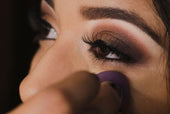
Enhance Your Eyes: A Guide to Eyeliner for Every Eye Shape with Liht Organics
Welcome to the Liht Organics blog, where we believe in celebrating the natural beauty of every eye shape. Today, we'r...
-
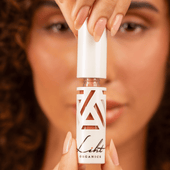
How to do makeup with only lipstick?
At Liht Organics, we believe in the power of clean beauty and the artistry of makeup. Makeup is more than just enhanc...
-

How to Clean Your Makeup Brushes in 6 Simple Steps
Cleaning your makeup brushes may seem like a tedious task, but it's an essential part of your beauty routine. Not onl...
-

Makeup Tips to Help You Look Your Most Flattering on Virtual Meetings!
After more than 2 years of work-from-home arrangement, and possibly hundreds of zoom calls and Google meet virtual me...
-
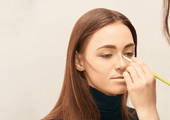
Learn How to Contour with This Simple Guide for Beginners
Want to take your makeup to the next level? Try contouring to achieve a more defined or sculpted look à la the Kardas...
-
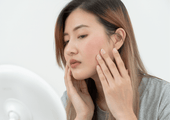
Essential and Easy Makeup Tips for Sensitive Skin
Living with sensitive skin conditions like eczema, psoriasis, and more is already not an easy feat. Throw in makeup t...
-
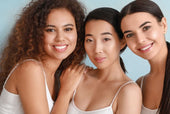
Raising Your Vibration: A Liht Organics Guide for Empowerment This International Women's Day
wp:paragraph As International Women's Day (IWD) approaches, it serves as a powerful reminder of the journey towards s...
-

The Beauty of Going Bare: Why Sleeping with Makeup is a No-No
Have you ever had one of those nights where you're too tired to clean off your makeup? You might believe, "Skipping...
-

Breast Cancer Awareness: Empower Your Beauty with Liht Organics Makeup
During October, we observe Breast Cancer Awareness Month as a way to unite and bring attention to breast cancer whil...
-

The Hidden Dangers of Carmine in Makeup Colorants: Embracing Healthier and Vegan Options
Makeup has become an integral part of our daily routines, allowing us to express our unique beauty. However, as we pr...
-

How can I ensure that my makeup products are organic and won't harm my skin?
When it comes to makeup, it’s important to be mindful of what you’re putting on your skin. With so many products on t...
-
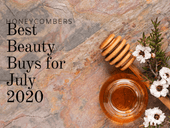
[FEATURE] HONEYCOMBERS – BEST BEAUTY BUYS IN JULY
by Nicole NithiyahWhat’s hot in our beauty hit list: Honest thoughts and top beauty stories we’re swooning over. As w...
-

Liht Organics Introduces Exclusive Gift Sets: Enhance Your Beauty This Festive Season!
As the holiday season approaches and the year draws to a close, Liht Organics is thrilled to present two enchanting g...
-

Get Spooktacular with the Best Halloween Makeup Ideas using Liht Organics' All-Natural, Vegan, and Cruelty-Free Cosmetics!
With Halloween just around the corner, it’s time to let your creativity shine and transform yourself into a spooky,...
-

Celebrating World Animal Day with Liht Organics: Embracing Natural Cruelty-Free Makeup
wp:paragraph As we observe World Animal Day, the team at Liht Organics takes great pride in honoring our pledge to...
-
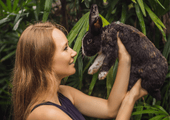
Reasons Why You Should Choose Cruelty-Free Cosmetics Instead!
With increasing exposés unveiling the ugly truth behind animal testing that goes on in the beauty industry, it is lit...
-

Celebrate Singles Day with Makeup That Empowers – 22% Off at LIHT Organics!
This Singles Day, treat yourself to beauty that goes beyond skin-deep. At LIHT Organics, we believe makeup is about s...
-

Preparing for the Cozy Beauty of Autumn: A Preview of Your Fall Look
As we bid farewell to the warm, sun-kissed days of summer, it’s never too early to start dreaming about the enchantin...
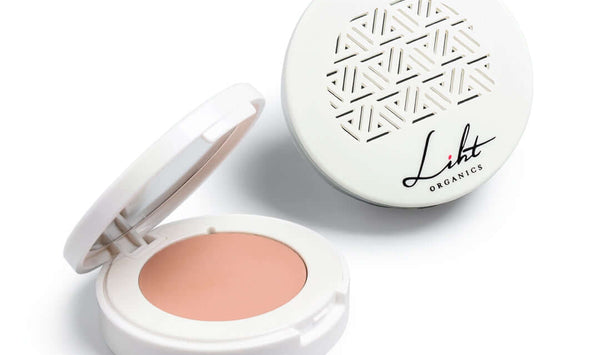
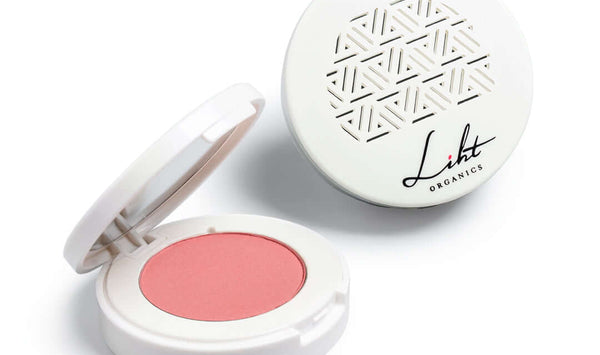
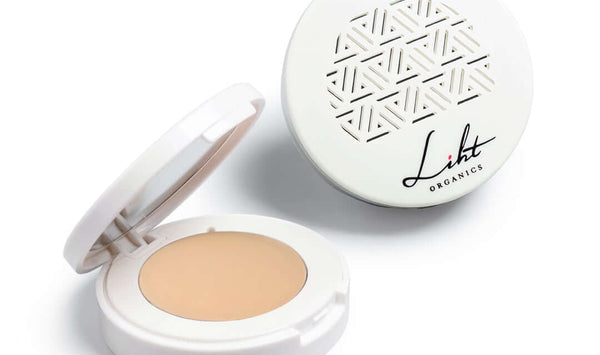
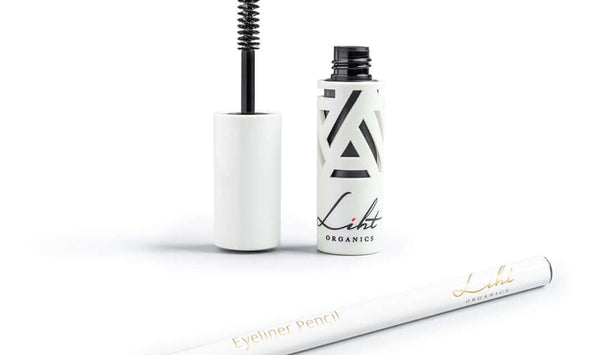
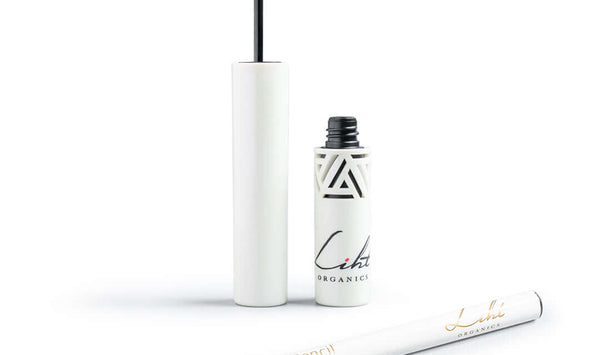
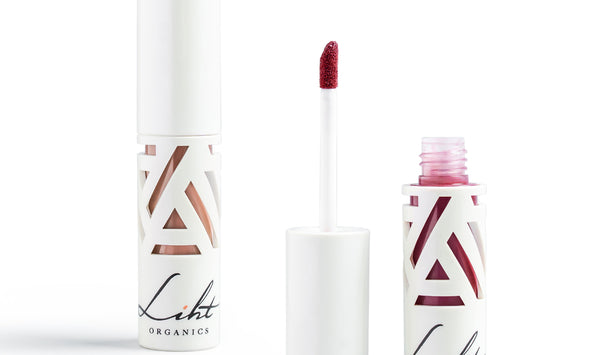
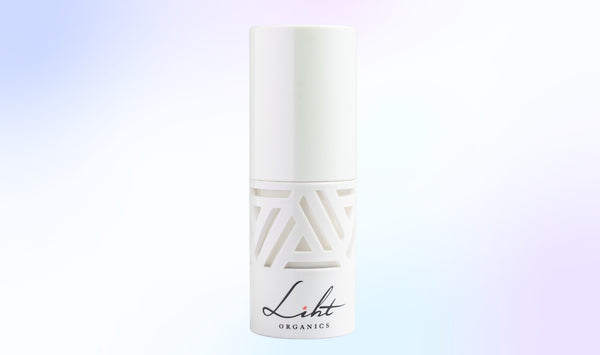

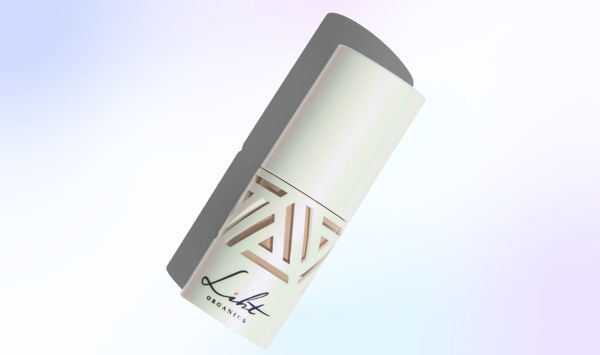
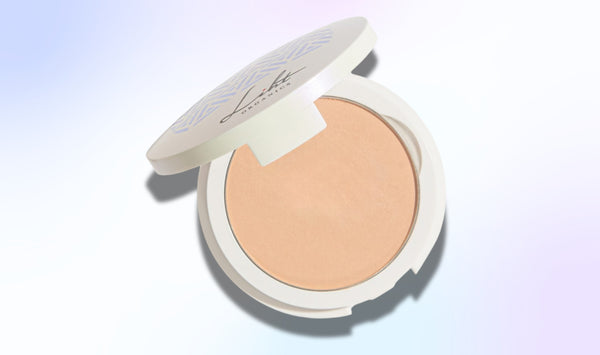
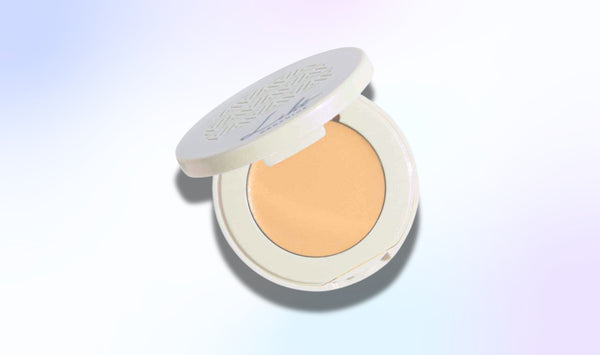
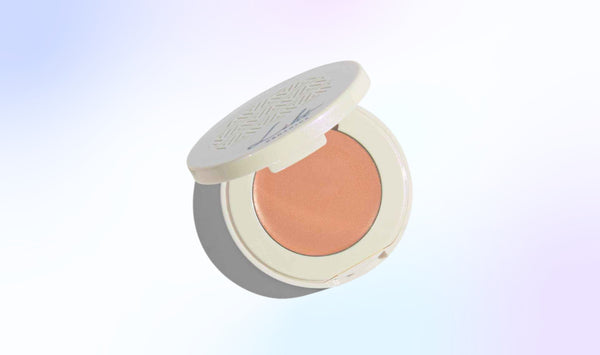
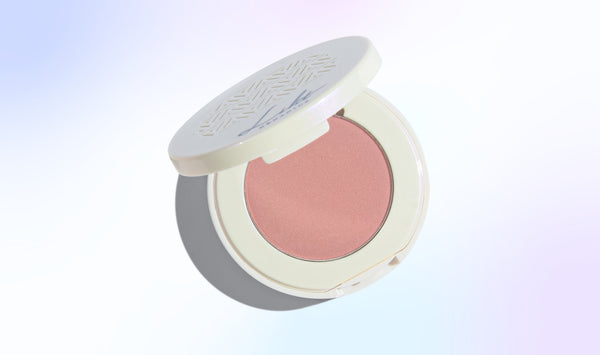
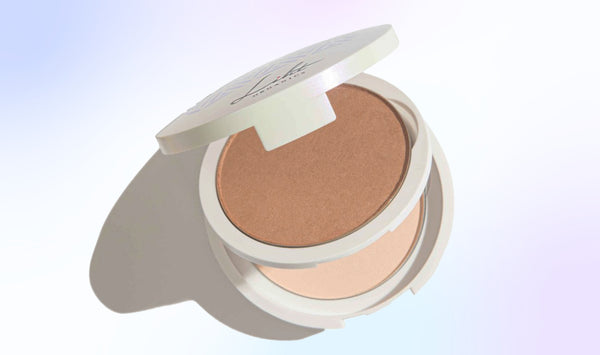
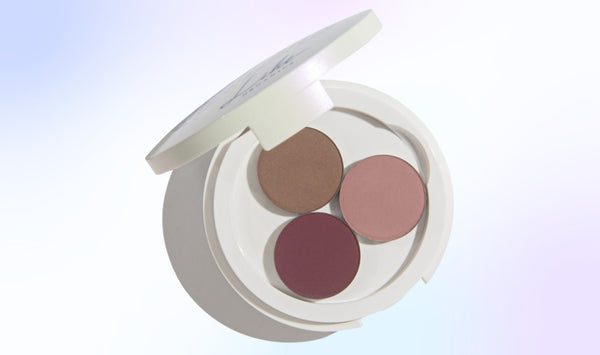
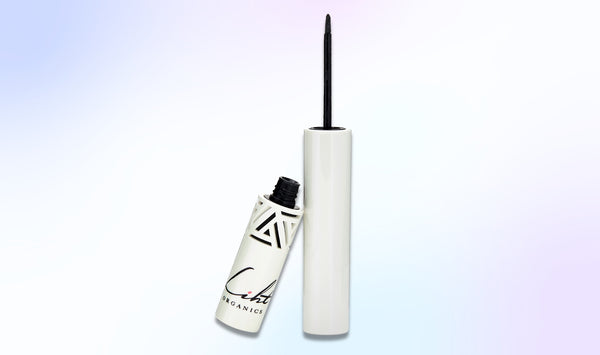
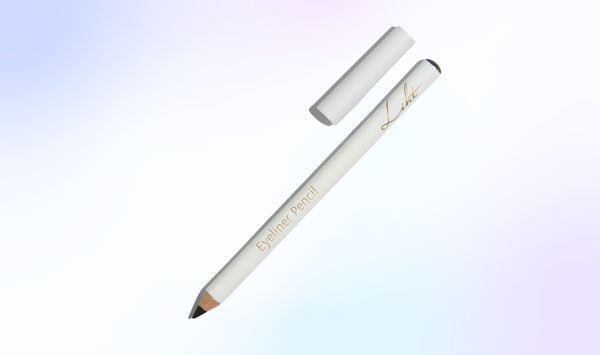
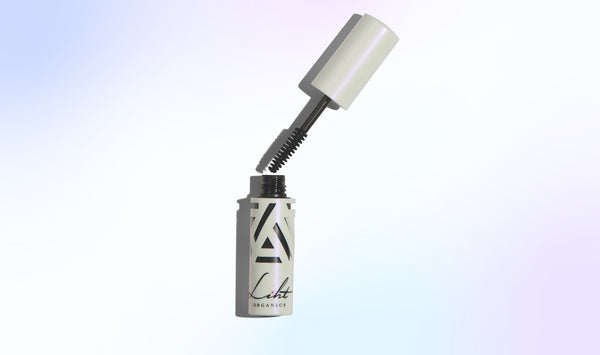
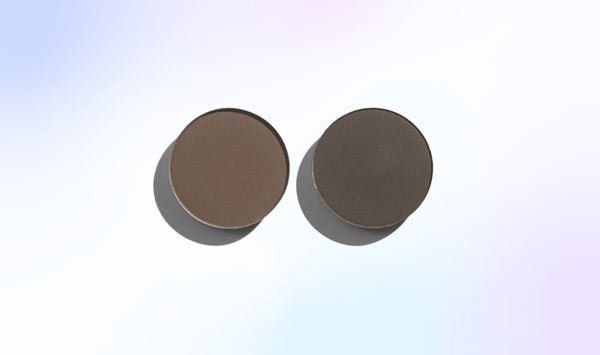
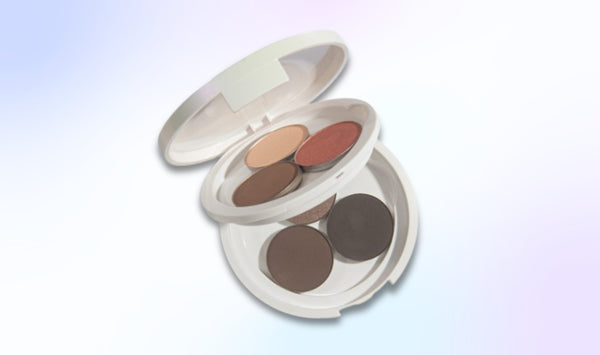
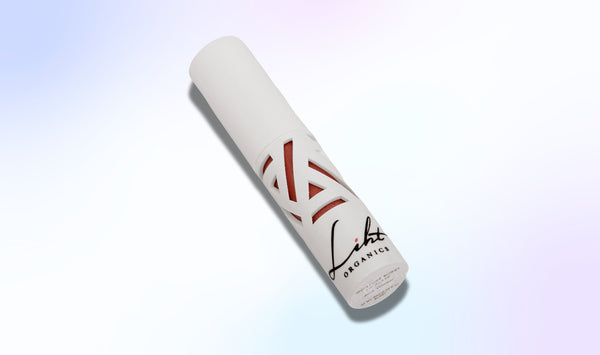
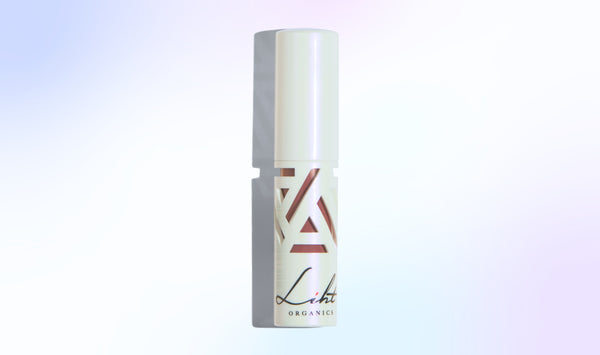
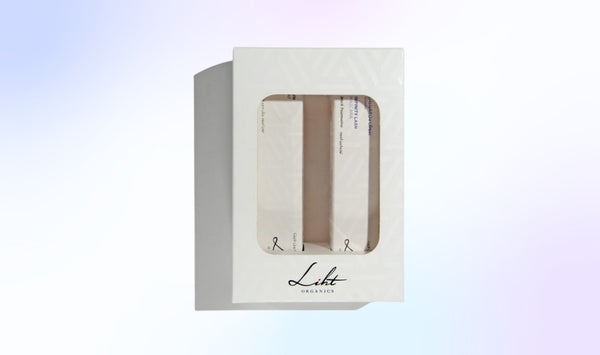
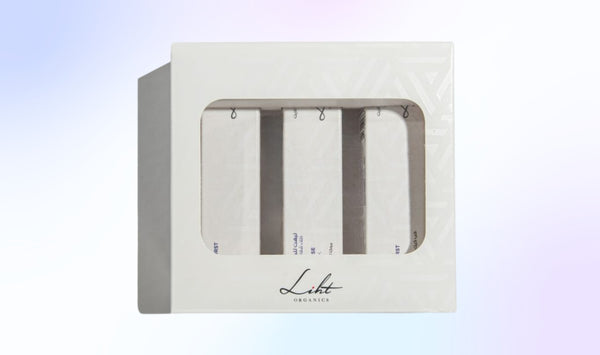


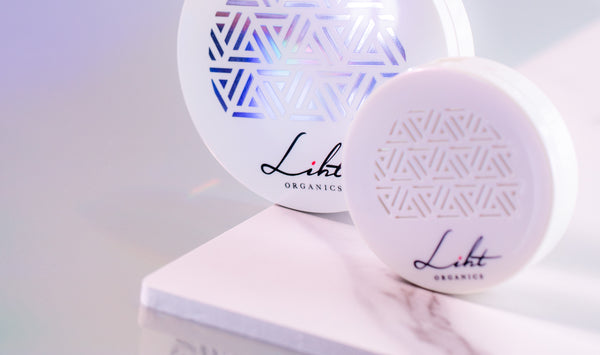
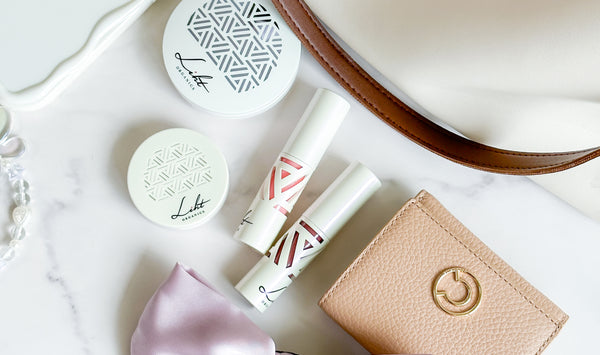
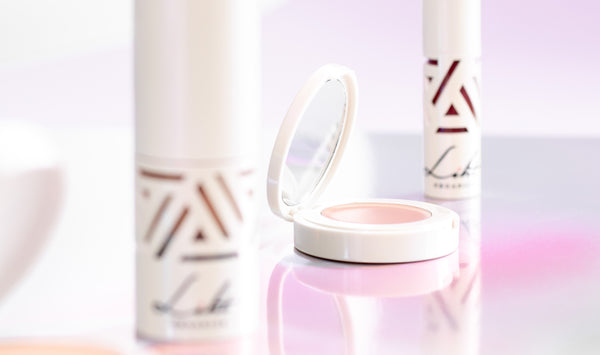




![[FEATURE] Liht Organics to debut at TFWA Asia Pacific show](http://lihtorganics.com/cdn/shop/articles/1_1.png?v=1759328400&width=170)
![[FEATURE] The Singapore-based organic makeup brand is a first-time exhibitor at this year’s TFWA Asia Pacific Exhibition in Singapore in May 2025](http://lihtorganics.com/cdn/shop/articles/2_1.png?v=1759328386&width=170)
![[FEATURE] Travel Retail Awards 2025 finalists - Best Make-up Product Color-Intense Liquid Lipstick – Liht Organics](http://lihtorganics.com/cdn/shop/articles/4_e2f54f0f-fcd1-46e7-9990-fc9d29e35131.png?v=1759328382&width=170)
![[FEATURE] Liht Organics targets expansion in travel retail](http://lihtorganics.com/cdn/shop/articles/3_1.png?v=1759328346&width=170)
































































